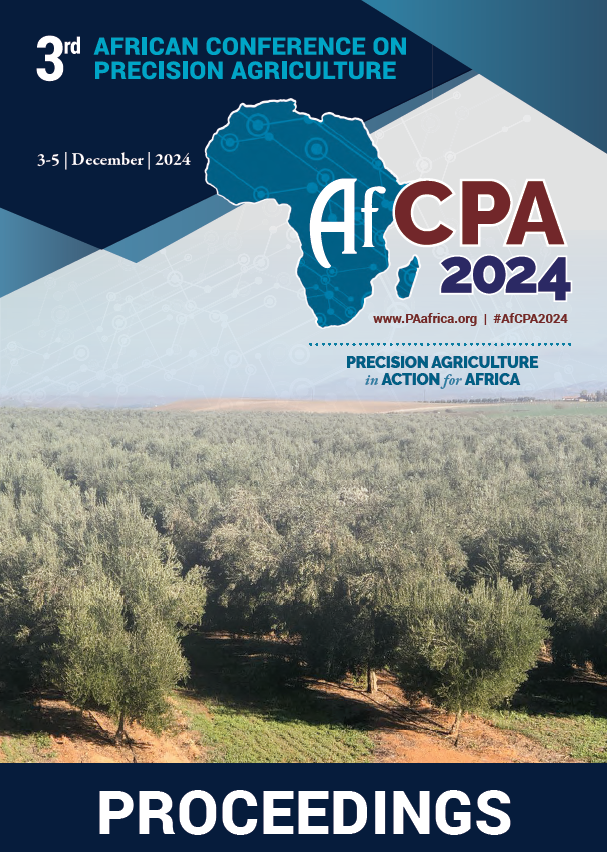Download the Conference Proceedings
Proceedings
Authors
| Filter results8 paper(s) found. |
|---|
1. Excellence in Agronomy 2030: A new CGIAR-wide initiative to deliver agronomy solutions at scaleRequired increases in crop production and productivity in sub-Saharan Africa (SSA) will not happen without the increased use of appropriate agronomic practices. While several thousand new varieties of nearly all key crops have been produced in the past decade, recent increases in yields in specific countries have only happened when such varieties received the right agro-inputs and management. That said, agronomy is often highlighted as an area that has not delivered impact at scale in SSA, or... B. Vanlauwe, T. Amede, F. Baudron, P. Chivenge, M. Devare, K. Saito, J. Kihara, V. Nangia, P. Pypers, K. Shepherd, E. Vandamme |
2. Feasibility studies on developing farmer friendly rapid in-situ evaluation technique for soil quality in cocoa planation based on pocket-sized near-infrared spectroscopy and chemometricsRapid and in-situ determination of soil quality holds a brighter potential for improving food security, food quality and minimizing waste of excessive application of soil amendments with its effect of pollution. In this study a pocket-sized NIR spectroscopy (740 -1070 nm) and chemometrics coupled with mobile phone was used to predict nitrogen (N), phosphorus (P), potassium (K), pH and calcium (Ca2+) in cocoa plantation soils in Ghana. Different partial least square algorithms (Full... |
3. Spectral assessment of chickpea morpho-physiological traits from space, air and groundChickpea (Cicer arietinum) is an important grain legume in semi-arid regions and water-stress is a major constraint to its productivity. Area under chickpea cultivation is growing but climate change toward greater aridity results in higher precipitation instability and risks yields. The ability to assess water potential can support irrigation decisions. Thus, improved ability to spatially assess plants water status can promote more efficient irrigation. The current... I. Herrmann, R. Sadeh, A. Avneri, Y. Tubul, R. Lati, S. Abbo, D.J. Bonfil, Z. Peleg |
4. Determining Nutrients rates for Maize, Rice, Cotton, and Tomato in Dry Savannah zone of Togo based on site specific nutrient management approachInadequate fertilizer application limits crop yields and lead to the soil fertility depletion. This study aims at formulating nutrients rates recommendations for main the crops in dry savannah zone of Togo. Site specific nutrient management approach based on spatial variations in nutrients status, crops nutrients requirement and average crop yields under field conditions was used to determine recommendations rates in N, P and K. For maize cropping, nutrients needs are 94 kgN.ha-1, 42... |
5. Development of Lodging Direction Determination System Using Image ProcessingIn this study, image processing system was developed for application on rice plants to determine lodging condition, which was contributing factor to declining harvester efficiency by using combine harvester. Therefore, We developed a system for determination of the lodging direction by algorithm based on convolutional neural network (CNN). As for deep learning framework, Pytorch1.1.0 were used to train and test the judging direction. GoogLeNet was used as a pre-trained CNN model. Lodging... E. Morimoto, Y. Arai, K. Nonami, T. Ito |
6. LiDAR-based soybean crop segmentation for autonomous navigationThe technological advances in the last few decades have greatly changed agricultural operations. In order to became safer, more profitable, efficient, and sustainable, modern farms have adopted the use of sophisticated technologies, such as robots, sensors, aerial images, and GNSS (Global Navigation Satellite System). These technologies not only increase the crop productivity, but also reduce the wide use of water, fertilisers, and pesticides. Due to this, they reduce costs and negative environmental... V.A. Higuti, A.E. Velasquez, M.V. Gasparino, D.V. Magalhães, M. Becker, D.M. Milori, R.V. Aroca |
7. DIGITAL MAPPING OF EXCHANGEABLE CATIONS IN SOILS OF SOUTHWESTERN NIGERIASoil acidity and low exchangeable cation are the major soil fertility challenges resulting in low crop productivity in Southwest Nigeria. Digital soil mapping is an effective way to achieve precision agriculture. However, most of the research work on soil exchangeable cations as soil information was not geo-referenced, The study created geo-database and developed a digitized map of soil exchangeable cations Indicating the spatial distribution in soils of southwestern Nigeria. Secondary data... O.E. Awosiyan, I.K. Mary, F.A. Adesina |
8. Climate Smart Agriculture: Constraints, Challenges and Opportunities to Promote the System in EthiopiaAgriculture is vital to the economy of Ethiopia and its development has significant implications for food security and poverty reduction. An increase in agricultural production over the past decades has been due to land area expansion, with a modest change in production techniques and improvement in yields. Yet, the substantial reliance of the sector on rain-fed systems has made it particularly vulnerable to variability in rainfall and temperature and climate change. Climate change may decrease... G. Agegnehu, T. Amede |
